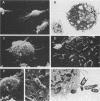Abstract
In contrast to the S-form of Salmonella minnesota, its Re mutant binds to mouse peritoneal macrophages. The binding reaction triggers an oxidative burst, measured by a chemiluminescent reaction. The oxidative burst was abolished in the presence of either purified lipopolysaccharide or porins (outer membrane proteins) extracted from the Re mutant, suggesting that both components are involved in binding of the Re mutant to macrophages. In addition, Fc-recognizing membrane structures on the macrophage surface bind the Re mutant. Preincubation of macrophages with the Re mutant abolishes immunoglobulin G-sensitized erythrocyte-induced chemiluminescence. Macrophages preincubated with immunoglobulin G-sensitized erythrocytes had a low chemiluminescent signal, and after treatment of the cells with the Re mutant, there was an additional, higher signal. Binding of purified C1q to the Re mutant decreased the adherence of the Re mutant to macrophages, resulting in a diminished chemiluminescent signal. Blocking of endogenous macrophage membrane-associated C1q with a monoclonal antibody [F(ab')2 fragment] directed against mouse macrophages (recognizes the A and B chains of C1q) diminished the oxidative burst. Therefore, the endogenous C1q of macrophages also appears to be involved in attachment of the S. minnesota Re mutant.
Full text
PDF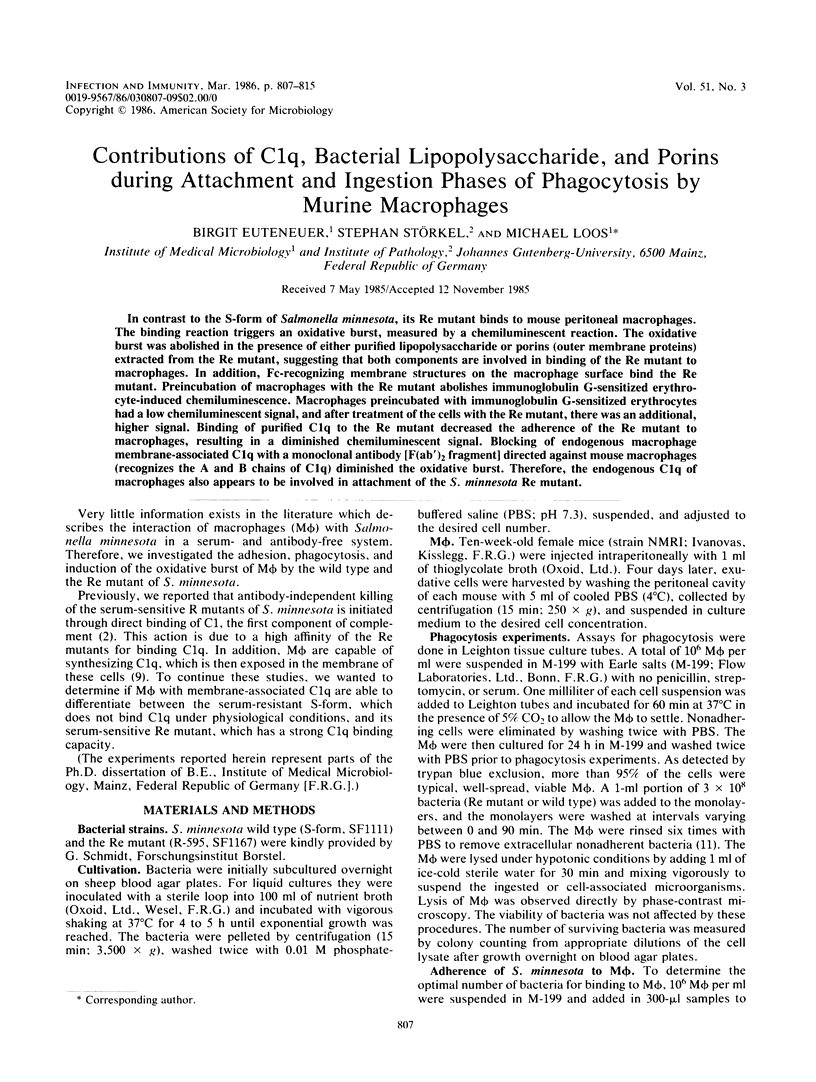
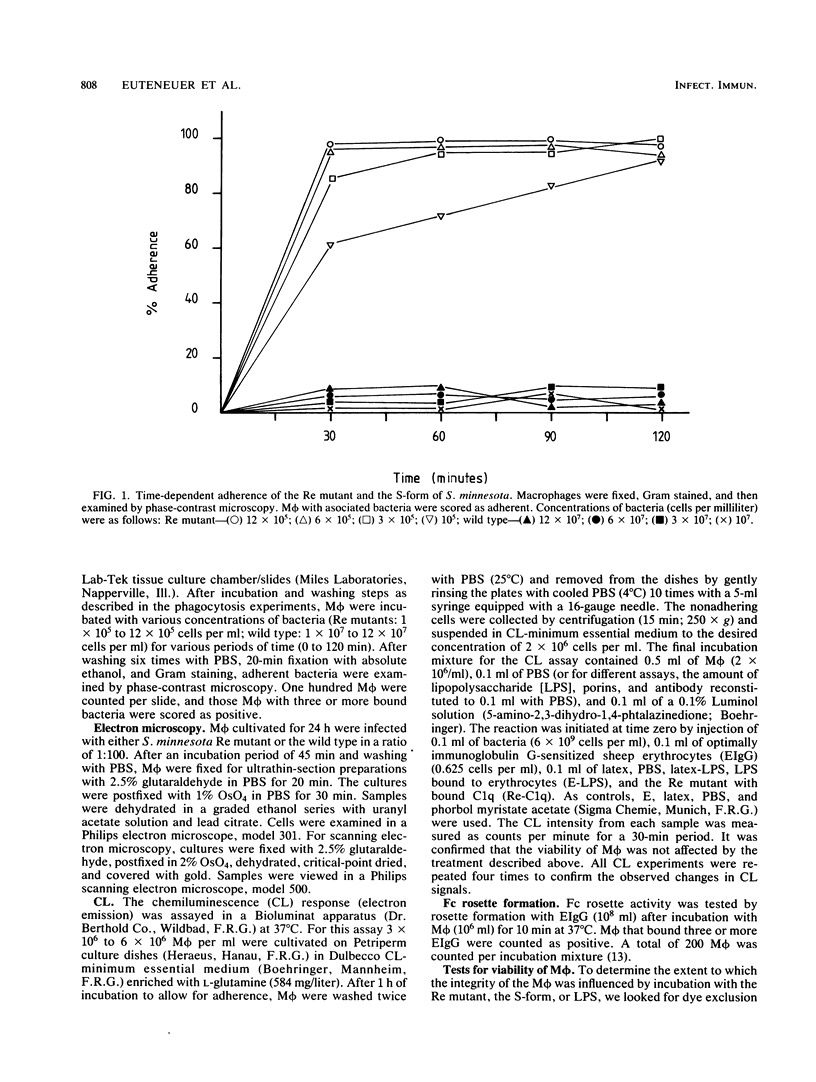
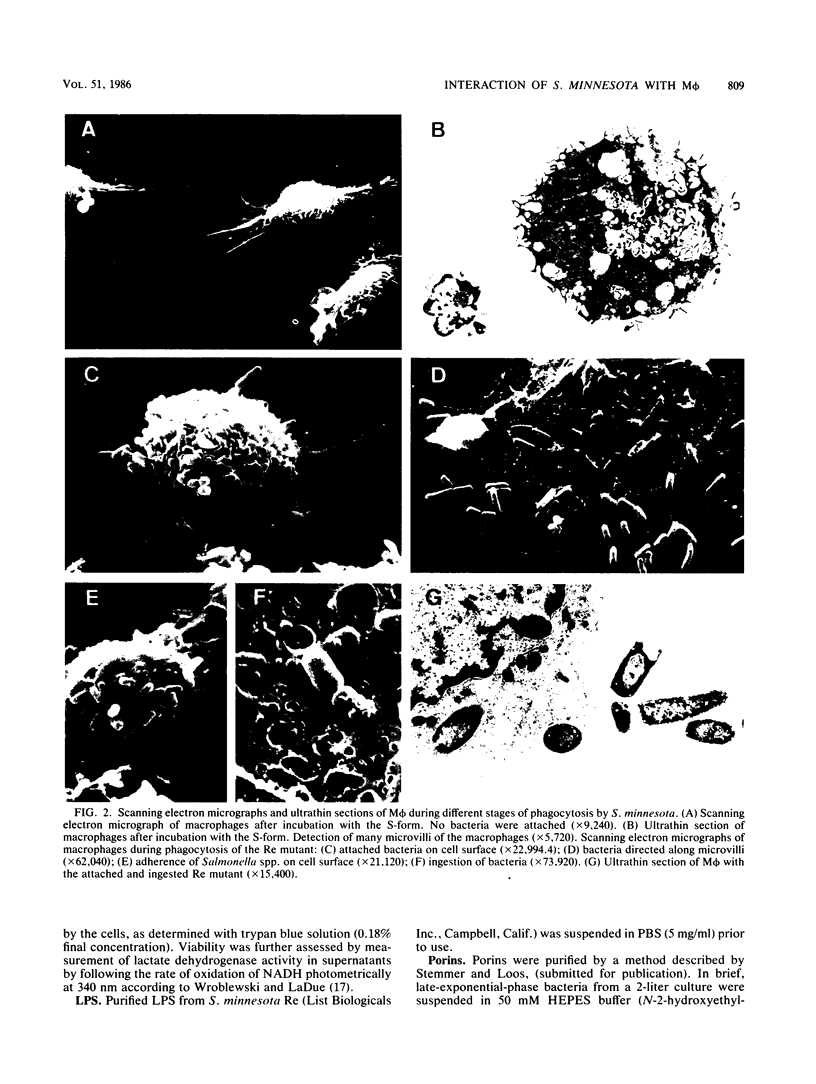
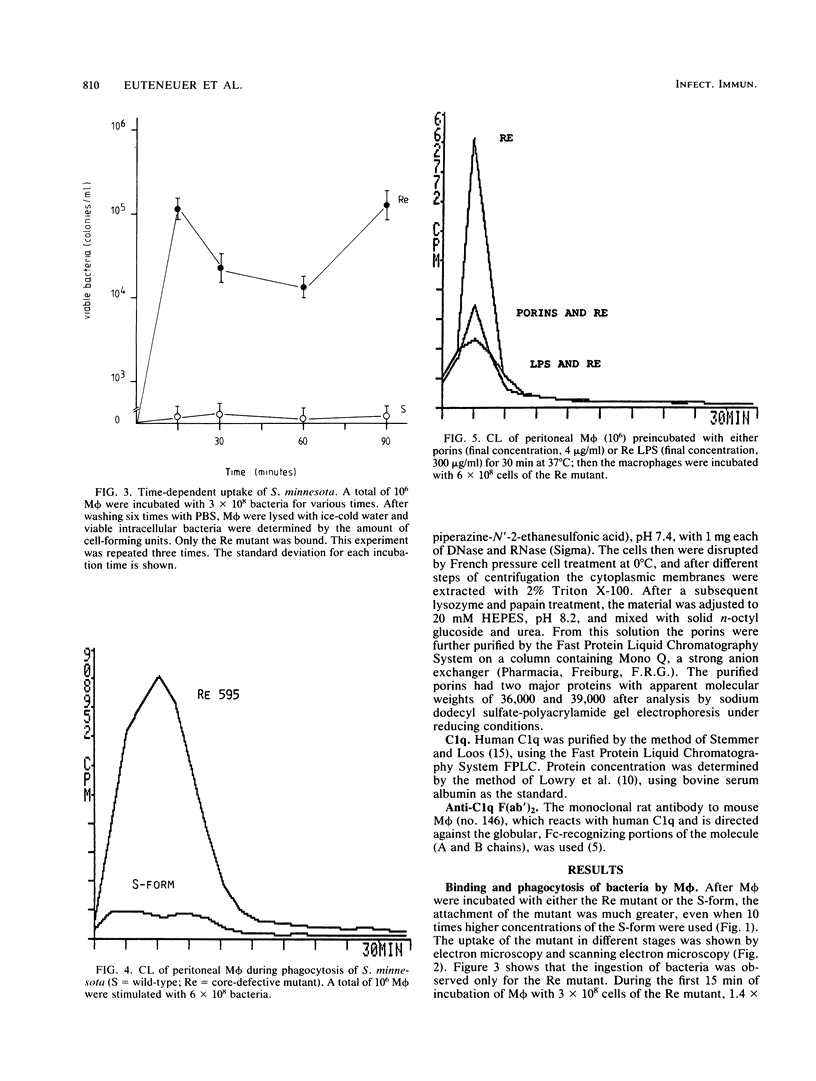
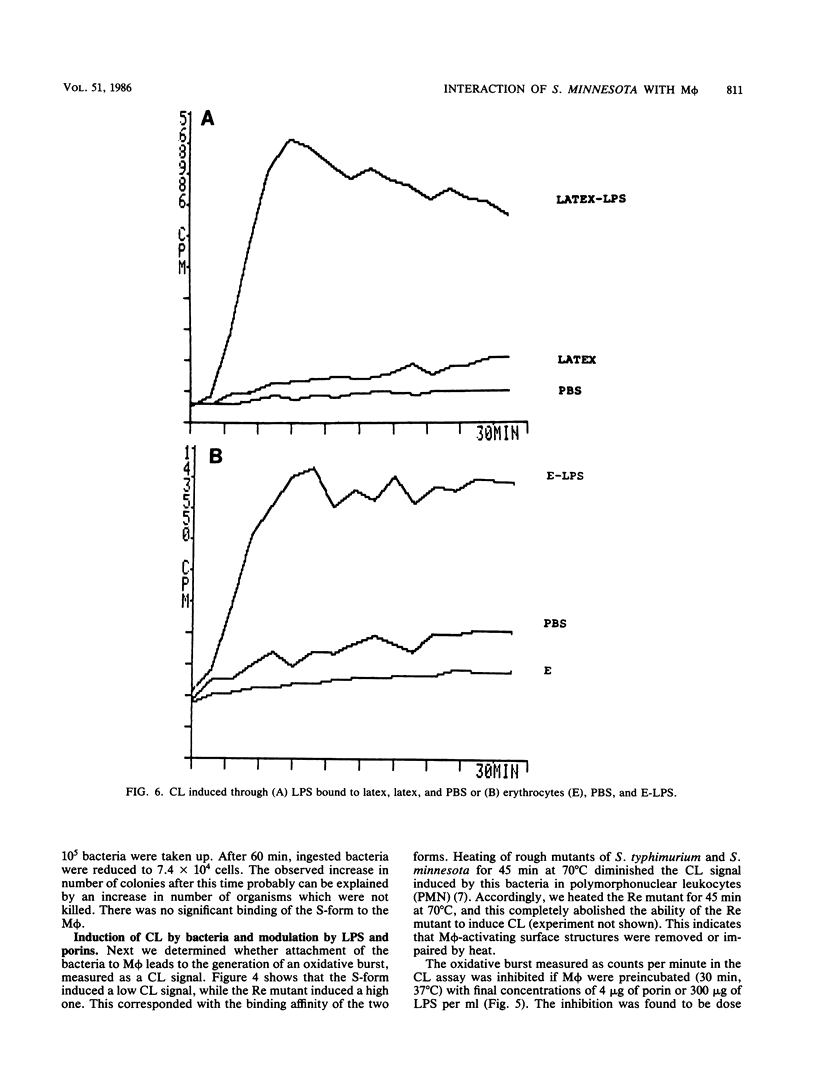
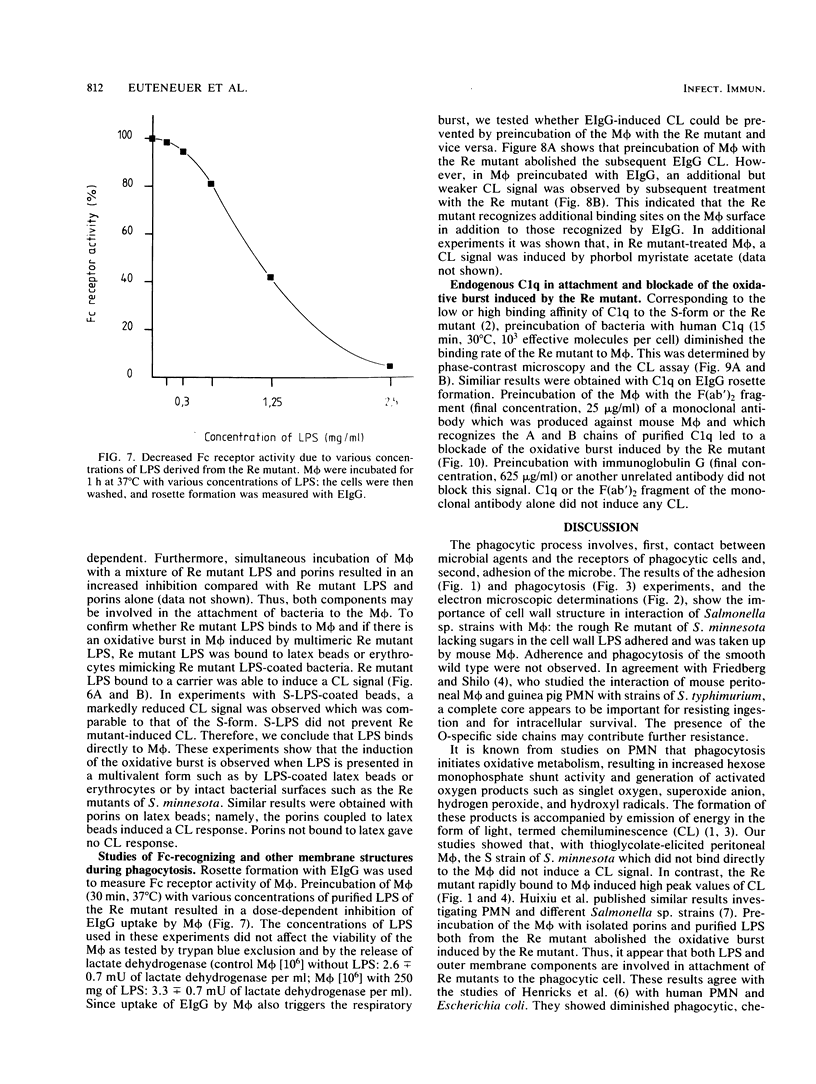

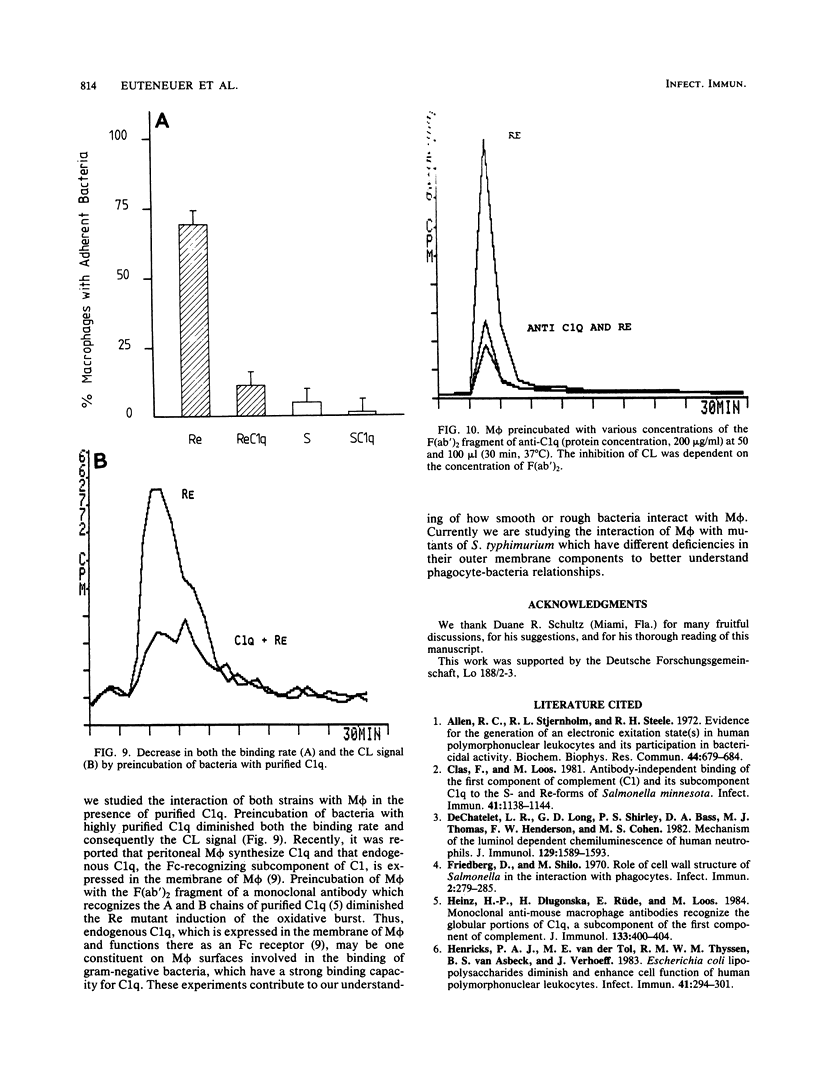
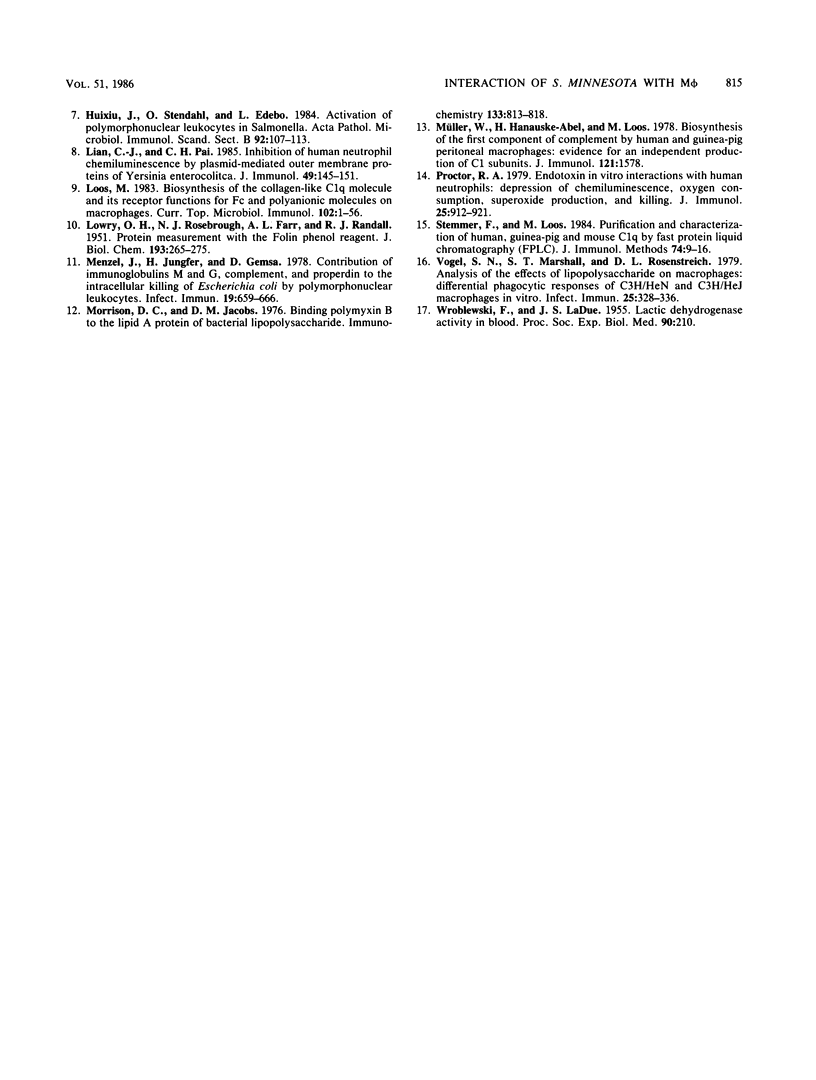
Images in this article
Selected References
These references are in PubMed. This may not be the complete list of references from this article.
- Allen R. C., Stjernholm R. L., Steele R. H. Evidence for the generation of an electronic excitation state(s) in human polymorphonuclear leukocytes and its participation in bactericidal activity. Biochem Biophys Res Commun. 1972 May 26;47(4):679–684. doi: 10.1016/0006-291x(72)90545-1. [DOI] [PubMed] [Google Scholar]
- Clas F., Loos M. Antibody-independent binding of the first component of complement (C1) and its subcomponent C1q to the S and R forms of Salmonella minnesota. Infect Immun. 1981 Mar;31(3):1138–1144. doi: 10.1128/iai.31.3.1138-1144.1981. [DOI] [PMC free article] [PubMed] [Google Scholar]
- DeChatelet L. R., Long G. D., Shirley P. S., Bass D. A., Thomas M. J., Henderson F. W., Cohen M. S. Mechanism of the luminol-dependent chemiluminescence of human neutrophils. J Immunol. 1982 Oct;129(4):1589–1593. [PubMed] [Google Scholar]
- Friedberg D., Shilo M. Role of cell wall structure of salmonella in the interaction with phagocytes. Infect Immun. 1970 Sep;2(3):279–285. doi: 10.1128/iai.2.3.279-285.1970. [DOI] [PMC free article] [PubMed] [Google Scholar]
- Heinz H. P., Dlugonska H., Rüde E., Loos M. Monoclonal anti-mouse macrophage antibodies recognize the globular portions of C1q, a subcomponent of the first component of complement. J Immunol. 1984 Jul;133(1):400–404. [PubMed] [Google Scholar]
- Henricks P. A., van der Tol M. E., Thyssen R. M., van Asbeck B. S., Verhoef J. Escherichia coli lipopolysaccharides diminish and enhance cell function of human polymorphonuclear leukocytes. Infect Immun. 1983 Jul;41(1):294–301. doi: 10.1128/iai.41.1.294-301.1983. [DOI] [PMC free article] [PubMed] [Google Scholar]
- Huixiu J., Stendahl O., Edebo L. Activation of polymorphonuclear leukocytes by salmonella. Acta Pathol Microbiol Immunol Scand B. 1984 Apr;92(2):107–113. doi: 10.1111/j.1699-0463.1984.tb02803.x. [DOI] [PubMed] [Google Scholar]
- LOWRY O. H., ROSEBROUGH N. J., FARR A. L., RANDALL R. J. Protein measurement with the Folin phenol reagent. J Biol Chem. 1951 Nov;193(1):265–275. [PubMed] [Google Scholar]
- Lian C. J., Pai C. H. Inhibition of human neutrophil chemiluminescence by plasmid-mediated outer membrane proteins of Yersinia enterocolitica. Infect Immun. 1985 Jul;49(1):145–151. doi: 10.1128/iai.49.1.145-151.1985. [DOI] [PMC free article] [PubMed] [Google Scholar]
- Loos M. Biosynthesis of the collagen-like C1q molecule and its receptor functions for Fc and polyanionic molecules on macrophages. Curr Top Microbiol Immunol. 1983;102:1–56. doi: 10.1007/978-3-642-68906-2_1. [DOI] [PubMed] [Google Scholar]
- Menzel J., Jungfer H., Gemsa D. Contribution of immunoglobulins M and G, complement, and properdin to the intracellular killing of Escherichia coli by polymorphonuclear leukocytes. Infect Immun. 1978 Feb;19(2):659–666. doi: 10.1128/iai.19.2.659-666.1978. [DOI] [PMC free article] [PubMed] [Google Scholar]
- Morrison D. C., Jacobs D. M. Binding of polymyxin B to the lipid A portion of bacterial lipopolysaccharides. Immunochemistry. 1976 Oct;13(10):813–818. doi: 10.1016/0019-2791(76)90181-6. [DOI] [PubMed] [Google Scholar]
- Müller W., Hanauske-Abel H., Loos M. Biosynthesis of the first component of complement by human and guinea pig peritoneal macrophages: evidence for an independent production of the C1 subunits. J Immunol. 1978 Oct;121(4):1578–1584. [PubMed] [Google Scholar]
- Proctor R. A. Endotoxin in vitro interactions with human neutrophils: depression of chemiluminescence, oxygen consumption, superoxide production, and killing. Infect Immun. 1979 Sep;25(3):912–921. doi: 10.1128/iai.25.3.912-921.1979. [DOI] [PMC free article] [PubMed] [Google Scholar]
- Stemmer F., Loos M. Purification and characterization of human, guinea pig and mouse C1q by fast protein liquid chromatography (FPLC). J Immunol Methods. 1984 Nov 16;74(1):9–16. doi: 10.1016/0022-1759(84)90361-2. [DOI] [PubMed] [Google Scholar]
- Vogel S. N., Marshall S. T., Rosenstreich D. L. Analysis of the effects of lipopolysaccharide on macrophages: differential phagocytic responses of C3H/HeN and C3H/HeJ macrophages in vitro. Infect Immun. 1979 Jul;25(1):328–336. doi: 10.1128/iai.25.1.328-336.1979. [DOI] [PMC free article] [PubMed] [Google Scholar]
- WROBLEWSKI F., LADUE J. S. Lactic dehydrogenase activity in blood. Proc Soc Exp Biol Med. 1955 Oct;90(1):210–213. doi: 10.3181/00379727-90-21985. [DOI] [PubMed] [Google Scholar]



